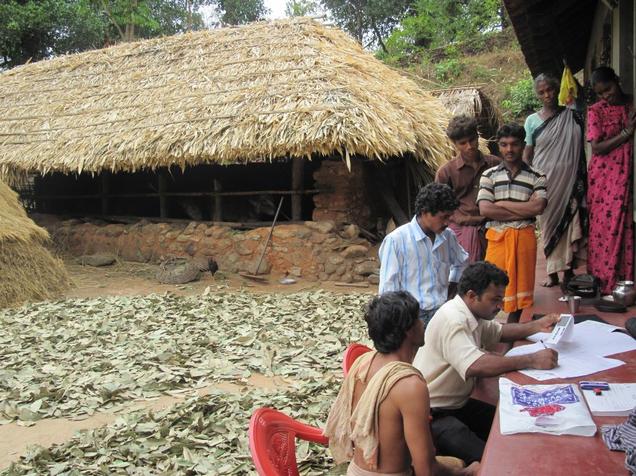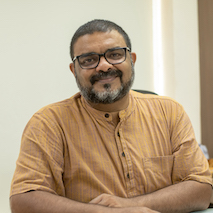Access to legal entitlements and participation in social protection schemes has become a focus area in the context of the widespread distress caused by the COVID-19 pandemic. The Union Government and many state governments prioritised such access as a key relief measure. As a result, they increased financial outlays, strengthened delivery mechanisms, and took up mass awareness generation activities. In their efforts, provisions under the National Food Security Act and the National Rural Employment Guarantee Act (NREGA) were the key legal entitlements in focus. As such, financial assistance under the National Social Assistance Programme and its state-level variants (such as the Madhu Babu Pension Yojana in Odisha), is probably the most critical social protection scheme.
Gram Vikas, the organisation I work with, had the opportunity to help provide access to these entitlements in Odisha. During the pandemic we helped mobilise rural communities, build local level capacities to understand procedures for access, and coordinate with local governments to strengthen access and reduce the number of ‘left-out’ families. Over a period of six months, we worked with more than 400 Gram Panchayats (GPs) in 18 blocks and six districts of Odisha, covering nearly 80,000 households. What we learnt and, continue to learn from this engagement, has made us more aware about the nuances of ‘exclusion’ from entitlements and social protection schemes.
In total we looked at approximately 12,000 specific cases of exclusion in detail, 43 percent of which were related to the Public Distribution System, 20 percent to social security pensions and 22 percent to NREGA. As we reflect on these cases, we realise that addressing issues of exclusion needs specific understanding of its causes.
In our work, we found three broad categories of reasons for exclusion:
1. Influence of vested interests and mis-governance of schemes
The factors that come into play here include inadequate financial outlays at different levels and perverse distribution of the allocation quotas among sub-units of implementation (state to districts, districts to GPs, and so on). For example, in the case of pension schemes (for example, for the elderly or widows) the available resources are supposed to be shared between administrative units on the basis of population. However, this norm is seldom adhered to, and districts that are more savvy—politically or administratively—tend to get higher allocations. We found that the available pension quota was not fully utilised in some districts. In many others, deserving people were left out due to limited allocation.
The available pension quota was not fully utilised in some districts. In many others, deserving people were left out due to limited allocation.
We also found a lack of transparency and accountability at the level of implementation (block offices or GP-level functionaries), along with rampant nepotism or favouritism, and outright demands for bribes. Officials such as Project Assistants at the block-level office (who handle the compilation of applications and their upward transmission) tended to monopolise the system to benefit selected community members. What’s more, elected representatives used the schemes as rewards in return for electoral support. A combination of these factors then led to deserving households or persons being excluded from accessing what is rightfully theirs.
2. Ignorance and/or fatigue
At the other end of the spectrum is the kind of exclusion that people cause for themselves. There is a lack of awareness (in general or regarding specific aspects of schemes), especially among the socially and economically marginalised, and those living in remote areas (far from administrative headquarter locations). Often, this exclusion is particularly pronounced amongst the most vulnerable, old people, or widowed women living on their own.
We also came across the element of fatigue. Many people said that they gave up on trying to obtain benefits, because they had failed to obtain them in the past, despite continued attempts.

3. Procedural complexities
Even in places where the governance and administration ecosystems were conducive and people were generally more aware, we found cases of exclusion due to the procedural complexities involved in different schemes. The ‘digital divide‘ is probably the single largest cause of such complexity.
Not limited to the oft-cited issues with Aadhaar biometrics, we found the increasing trend to go ‘online’ with applications and their follow-up, leading to high costs of compliance with procedural norms. Moving away from paper-based applications to computer-dependent ones has not reduced the transaction costs for those who are financially vulnerable. On the contrary, they now have to pay once for creating the paper trail and then once more to get the application online. Administrative obduracy only adds to this mix.
Moving away from paper-based applications to computer-dependent ones has not reduced the transaction costs for those who are financially vulnerable.
Through our work we found enough evidence to challenge the commonly accepted perception that exclusion from schemes tends to be caused by a combination of factors. What we found, to our surprise initially, was that there was always a root cause that fitted neatly into one of the three categories.
So how do we address exclusion?
We believe that steps taken to address exclusion from obtaining due benefits can be more meaningful if interventions are aligned with the root cause. In our recent experiences, we have decided to focus on the second and third categories, while waiting for the larger governance-related aspects of the first category to sort themselves out.
This may sound naïve, but given that Odisha will be holding local government elections in less than a year, we believe there are many incentives for the government to loosen their purse strings, allocate more resources, and iron out implementation difficulties. The pre-election season is also one where nepotistic tendencies tend to lie low.
When it comes to ignorance/fatigue, general awareness generation does work. To make it more effective, we found demonstrations to be helpful. For example, somebody who was experiencing fatigue was more willing to try again, if they saw that their neighbour, who was in the same situation as them, had managed to get widow pension benefits. We found that such small beginnings had a cascading effect on confidence levels, leading to increased demand for benefits.
The procedural aspects are where we have found the plodding more cumbersome and complex. Success in one case does not guarantee success in similar cases, even in the same location. Great amounts of patience and ability are required to address cases one by one, and take them to their logical end.
What we have learned above all is that addressing the issue of exclusion and inadequate access to critical social protection benefits requires a multi-faceted approach. The reforms needed on the supply side—of better scheme design or less complicated procedures—will require relentless pressure from the ground on the administrative system. Strong, evidence-based advocacy at the state and national levels will be needed. For this, academic and research organisations, as well as donors and civil society organisations will need to join hands with community-based organisations and field-based organisations for joint efforts in sustained advocacy.
We believe that some improvements can be achieved within the existing systems. Creating more awareness about procedures and building sustained pressure from current and potential beneficiary groups will help. Efforts to sensitise GP representatives and the local-level bureaucracy to act more humanely when handling matters related to social protection need to be taken up. In addition, civil society organisations can help build local capacities to bridge the technology divide and gaps, till more systemic reforms are brought about.
—
Know more
- Read the India Exclusion Report (2019-2020).





